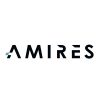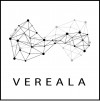The innovative potential of nanotechnologies offers a wide span of opportunities for the textile industry.
With the help of nanotechnologies, textile materials can be improved for both professional and general public users; whether nano-engineered materials are integrated into the polymer matrix or coated onto the surface of the fibres, they offer possibilities such as improved durability, self-cleaning, and water- or dirt- repellent features.
 Through the manufacture of smart– or e-textiles, nanotechnology-enabled apparel can both protect the wearer from pathogens, toxic gases and other hazardous substances, benefiting the medical and rescue services as well as in the military, and allow the constant monitoring of body functions in applications ranging from regenerative activities to the enhancement of the quality of life of sufferers of long-term diseases. In the field of agriculture and crop optimisation, nanofibres that have the ability to absorb plant protection products are applied to achieve controlled slow release functionalities.
Through the manufacture of smart– or e-textiles, nanotechnology-enabled apparel can both protect the wearer from pathogens, toxic gases and other hazardous substances, benefiting the medical and rescue services as well as in the military, and allow the constant monitoring of body functions in applications ranging from regenerative activities to the enhancement of the quality of life of sufferers of long-term diseases. In the field of agriculture and crop optimisation, nanofibres that have the ability to absorb plant protection products are applied to achieve controlled slow release functionalities.
Fibres used in the textile industry are notably improved by nanotechnology; one example is nanocellulose, which combines low cost, lightweight, electric conductivity, environmentally friendly resources and high resistance, thus opening an immensely vast scope of possible applications.
Regulation and market approval of nanotechnology in textiles:
- In the United States, a biocidal product containing nanosilver used in textiles has been registered by the Environment Protection Agency (EPA) under the Federal Insecticide, Fungicide, and Rodenticide Act (FIFRA), thus making it the first nano-silver product worldwide to be assessed by a national authorisation body.
- In the European Union, no nano-specific legislations are currently addressing nanomaterials used in textiles, nonetheless they fall under the scope of the overarching REACH regulation and the General Product Safety Directive
Support for NIA Members:
The NIA provides specific support to its Members in the Textiles Industry.



















